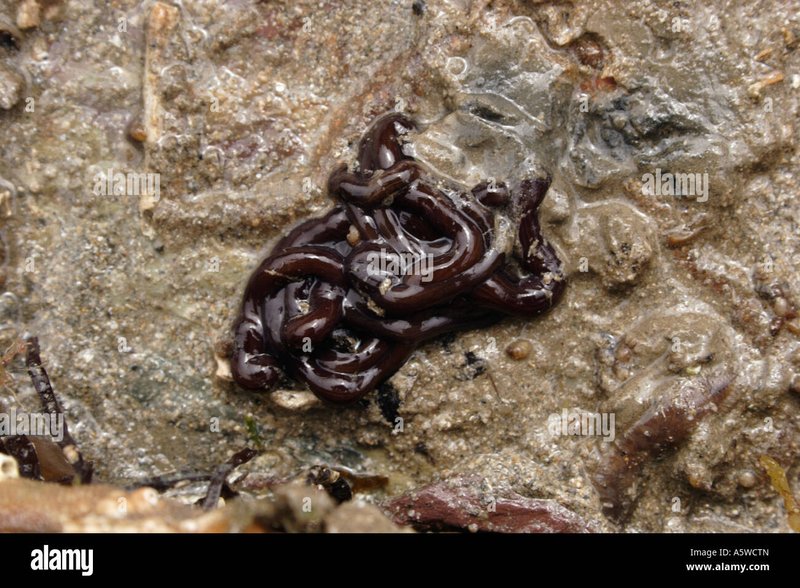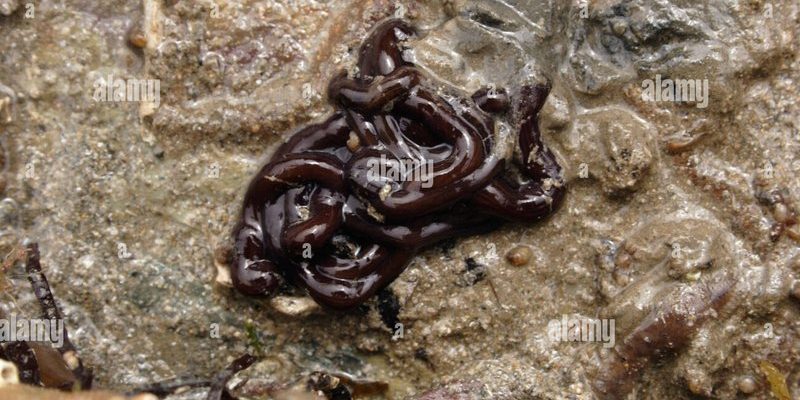
These worms can grow quite long—some reaching up to 30 meters (or nearly 100 feet) in length! That’s like having a small whale swimming through the sea but in a much less intimidating form. They’re found primarily in rocky, sandy shores where they burrow into the substrate, making them somewhat elusive. But if you’re lucky enough to spot one, they’ll surely capture your attention with their unique beauty and biology. So, let’s dive deeper (pun intended!) into the world of bootlace worms and explore what makes them such an intriguing part of our coastlines.
What Are Bootlace Worms?
Bootlace worms are fascinating creatures belonging to the phylum Annelida. This means they’re segmented worms, much like earthworms, but with their own twists. Their long, slender bodies are made up of numerous segments, which help them move gracefully through sand and water.
You might picture them as nature’s version of colorful licorice, often seen in various hues, from brownish greens to vibrant purples. They can be quite mesmerizing to watch, especially when they’re undulating through the water. But don’t let their beauty fool you; they can be quite slippery and tricky to catch if you’re trying to observe them up close!
These worms are generally found in shallow waters. They prefer to burrow into soft substrates, where they can feast on microorganisms and detritus. So, if you ever see a wriggling line in the surf, it’s likely one of these curious little beings.
Habitat and Distribution
Bootlace worms thrive in the shallow waters along British and European coastlines. You can find them from the rocky shores of Scotland to the sandy beaches of southern England and even across various European shorelines. They typically favor environments that provide plenty of shelter, like rocky crevices or soft sand where they can burrow.
The habitat they choose is crucial for their survival. These worms play an essential role in the ecosystem, helping to break down organic matter and recycle nutrients into the food web. With their fascinating behavior and unique physical attributes, they contribute significantly to the marine life around them.
Interestingly, they tend to be more prevalent during certain seasons. In the summer months, when the waters warm up, you might encounter more of these worms closer to the surface. If you’re out beachcombing during this time, keep an eye out—you never know when you might spot one!
Feeding Habits of Bootlace Worms
Bootlace worms are quite the little scavengers! They primarily feed on tiny organisms, like plankton and detritus, that float around in the water. How do they do this? Well, they have specialized structures called *tentacles* near their heads that help them capture food as it passes by. It’s like they’re waving around fishing nets, hoping to snag a bite!
They also play a vital role in cleaning up their environment. By feeding on decaying organic matter, they help recycle nutrients, making them essential for the health of sandy and rocky shore habitats. So, next time you see one, remember they’re not just a pretty sight; they’re working hard to keep the ecosystem balanced.
If you’re ever on the shore and curious to know what they might be munching on, look for tiny bits of organic material in the water. You might just find that the bootlace worms are dining on some of it, contributing to the cycle of life right before your eyes!
Reproduction and Lifecycle
Reproduction in bootlace worms is both fascinating and complex. They have a fascinating method called *fragmentation*, where a single worm can regenerate into two separate individuals! If a bootlace worm gets cut, it can grow into two worms—talk about a unique survival strategy!
Most of the time, though, they reproduce during the warmer months. They release their eggs into the water, where fertilization occurs. The larvae that hatch from these eggs are free-swimming and eventually settle down on the ocean floor, where they’ll begin their transformation into adult bootlace worms.
This unique aspect of their lifecycle allows their population to thrive in environments that might be challenging for other species. It’s nature’s way of ensuring that bootlace worms continue to inhabit our coasts, no matter what challenges they might face!
Interactions with Humans
You might be wondering how bootlace worms interact with us humans. While they’re not exactly cuddly pets, they play a crucial role in the marine ecosystem, which indirectly affects us. Their presence indicates a healthy environment, and they help maintain the balance we rely on in coastal areas.
However, they sometimes get caught up in fishing nets or oyster beds, leading to the misconception that they’re pests. But in reality, they’re beneficial creatures that help sustain the health of our marine ecosystem. If you’re a beachgoer, you can help by being mindful of these worms and their habitats.
So, the next time you dig in the sand or cast your fishing line, take a moment to appreciate the life that’s teeming underneath the surface. Bootlace worms might not be the first creatures that come to mind, but they deserve our respect as vital players in the coastal ecosystem.
Conservation Status and Threats
The bootlace worm isn’t currently listed as endangered, but that doesn’t mean they’re free from threats. Coastal development, pollution, and climate change can all impact their habitats. As sea levels rise and temperatures change, the delicate balance of their ecosystem may be at risk.
Protecting coastal environments is crucial for ensuring the survival of not just bootlace worms but many other marine species as well. Sustainable practices and awareness about pollution can help keep our shorelines healthy and thriving.
As responsible beachgoers and ocean lovers, we can all do our part. Whether it’s cleaning up after ourselves during a beach day or advocating for better environmental policies, small actions can help protect these remarkable creatures for future generations.
Bootlace worms may not be the first marine creatures that come to mind when you think of coastal life. However, they’re a perfect example of how even the smallest creatures can have a significant impact on our ecosystems. Their unique adaptations and roles in marine environments make them truly remarkable.
Next time you’re wandering along British or European shorelines, keep an eye out for these fascinating worms. They’re not just part of the scenery; they’re a vital part of the ecosystem we all share. So, let’s appreciate them, learn more about them, and do our part to keep their habitats safe and thriving. After all, a healthy ocean means a healthy planet!

